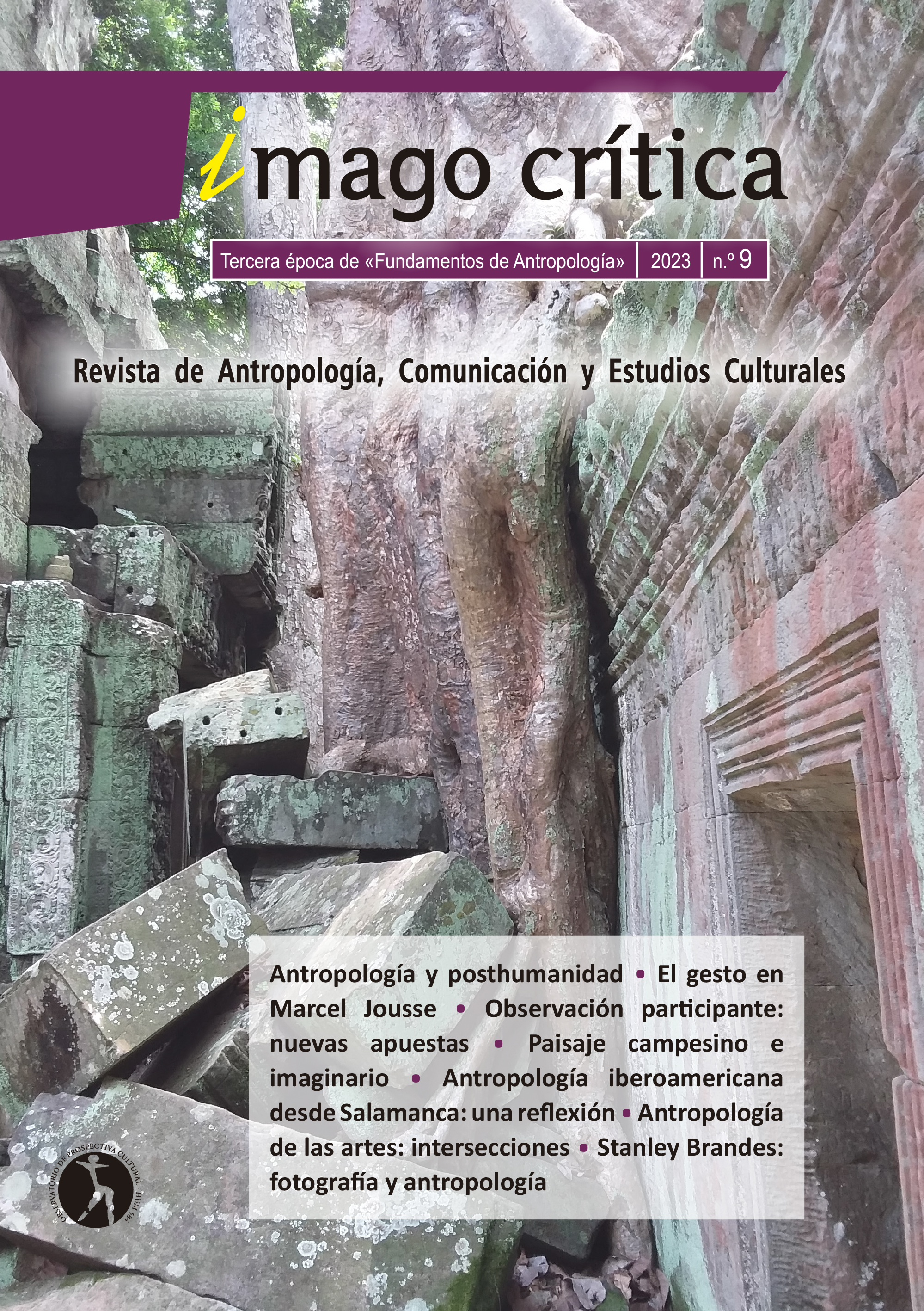Thinking the image
On the Christian paradigm of representation in the Middle Ages
DOI:
https://doi.org/10.30827/ic.29090Keywords:
Image, Medieval images, imago, Middle Ages, Ars MoriendiAbstract
In the medieval Christian world, pictorial representations helped the faithful to experience the sacred. Thus, reflecting on the uses and manipulation of images is not only a theoretical question, but also a concern with their modes of operation and reception. Indeed, the aim of our article is to analyze the importance of the image as a means of expression, communication and aesthetic mechanism in medieval Christian society. To do so, we will review the concept of image in the Middle Ages in order to understand the decisive role of the articulation between texts and images for the success of the pedagogy of the good to die at the end of the 15th century. Finally, we will reflect on the particularities of the use of engravings in the medieval religious experience.
References
Fuentes primarias
Anónimo. Art de Be Morir. c. 1493. Incunable impreso por Pablo Hurus en Zaragoza. En catalán. Once grabados. Sector de Reservados. 11-VI-41. Biblioteca da Catalunya, Barcelona http://mdc.cbuc.cat/cdm/compoundobject/collection/incunableBC/id/149696/rec/
Anónimo. Arte de Bien Morir y breve confessionário. En castellano. Incunable impreso por Pablo Hurus en Zaragoza. 1480. Once grabados. Biblioteca del Monasterio de San Lorenzo Escorial, España.
Fuentes secundarias
Baschet, Jérôme. (2016). A Civilização Feudal: Do Ano Mil à Colonização da América. Ed. Globo.
Baschet, Jérôme. (2008). L’Iconographie Médiévale. Gallimard.
Baschet, Jérôme. (1996); Schmitt, Jean-Claude (Org). L'image. Fonctions et Usages des Images dans l'Occident Médiéval. Éditions Le Léopard d'or.
Belting, Hans (2007). Antropología de la imagen. Katz Editores.
Belting, Hans (2010). Semelhança e Presença: A História da Imagem antes da Era da Arte. [s.n.].
Bosi, Alfredo (1988). “Fenomenologia do Olhar”. En: Novaes, Adauto (Org ). O Olhar. Companhia das Letras.
Cabello, Gabriel (2010). “Malestar en la Historia del arte: sobre la antropología de las imágenes de Hans Belting y Georges Didi-Huberman”. En: Revista Imago Crítica, 2. https://revistaseug.ugr.es/index.php/imago/article/view/28027/25616
Didi-Huberman, Georges (1990). Devant l’image. Questions posées aux fins d'une histoire de l'art. Minuit.
Didi-Huberman, Georges 2000). Devant le temps. Minuit.
Didi-Huberman, Georges. (2002) L’Image survivante. Histoire de l'art et temps des fantômes selon Aby Warburg. Minuit.
Didi-Huberman, Georges. (2007). L'Image ouverte. Motifs de l'incarnation dans les arts visuels. Gallimard.
Fernie, Eric (1996). Art History and Its Methods: A Critical Anthology. Phaidon.
Freedberg, David (1992). El Poder de Las Imágenes. Estudios sobre la Historia y la Teoría de la Respuesta. Cátedra.
Kappler, Claude (1994). Monstros, Demônios e Encantamentos no fim da Idade Média, Martins Fontes.
Luaces, Joaquín Yarza (1987). Formas artísticas de lo imaginario. Anthropos.
Mâle, Émile (1908). L'art religieux de la fin du Moyen Âge en France. Étude sur l'iconographie du Moyen Âge et sur ses sources d‟inspiration. Philippe Renouard.
Mattoso, José (2013). Poderes Invisíveis. O Imaginário Medieval. Temas e Debates.
Pugliese, Vera. (2011). “O anacronismo como modelo de tempo complexo da espessura da imagem”. En: Revista Palíndromo – Teoria e História da Arte. n. 6. https://www.yumpu.com/pt/document/read/13328773/o-anacronismo-como-modelo-de-tempo-complexo-da-ppgav
Didi-Huberman, Georges (2007). O corpo das imagens. Ensaios sobre a cultura visual na Idade Média, Editora EDUSC.
Didi-Huberman, Georges; Teodoro, Leandro Alves; Pietro, Pablo Martín (2022). Cativar as almas: diretrizes para a instrução espiritual (séculos XII-XV). Editora UNISINOS.
Sekuler, Veronica (2001). Medieval Arts. Oxford History of Art, Oxford University Press.
Warburg, Aby (2013). A renovação da Antiguidade pagã. Contraponto.
Downloads
Published
Issue
Section
License
Copyright (c) 2023 Imago crítica. Revista de Antropología, Comunicación y Estudios Culturales

This work is licensed under a Creative Commons Attribution-NonCommercial-ShareAlike 4.0 International License.












